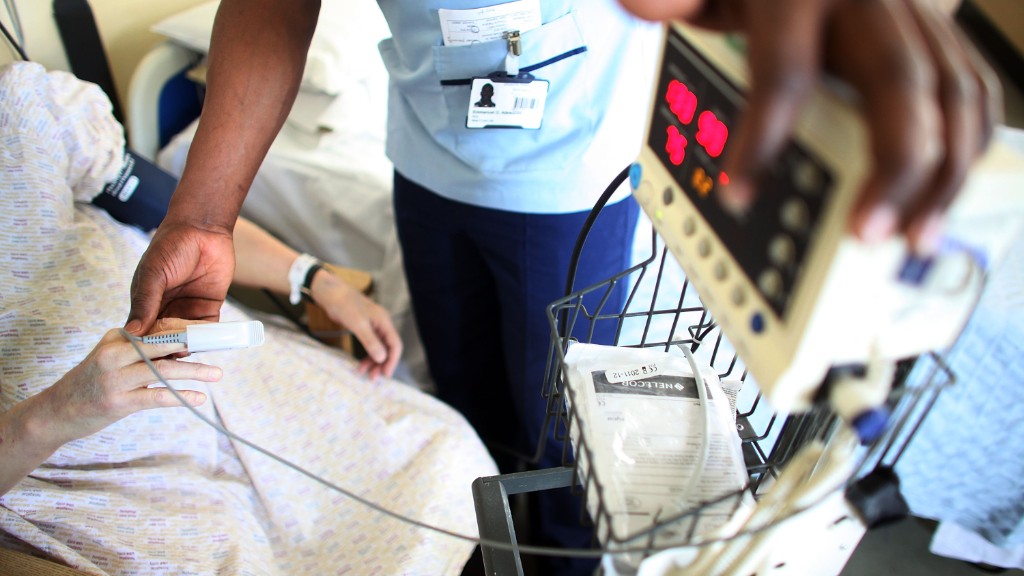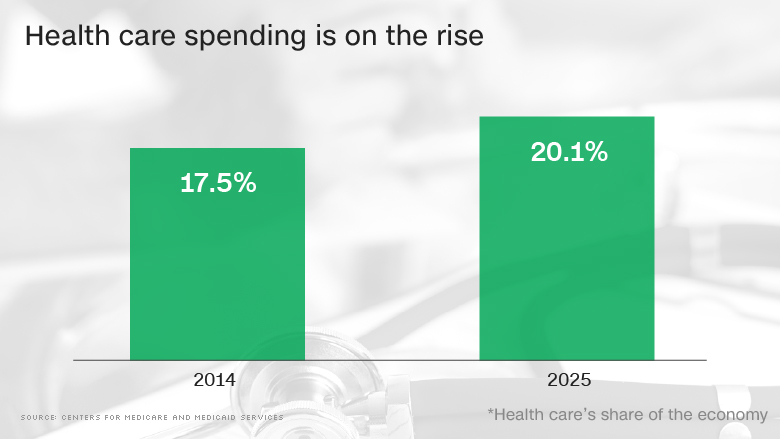
With Baby Boomers growing older, the economy improving and medical prices climbing, health care spending will rise in coming years.
The annual growth in health spending is expected to be 5.8%, on average, between 2015 and 2025, according to data published Wednesday by the Centers for Medicare & Medicaid Services.
Spending growth had been at record lows in recent years, muted by the weak economy and some Obamacare measures meant to limit expenditures. But it began to grow again in 2014, as more Americans received coverage through the Obamacare exchanges and Medicaid expansion.
Related: Obama calls for 'public option' for Obamacare
In 2015, health spending was expected to grow 5.5% as the newly insured took advantage of their coverage, but it's on track to dip to 4.8% this year largely due to more restrained growth in Medicaid spending as enrollment slows and insurers better manage usage.
After that, however, spending is projected to accelerate once again, increasing to 5.7%, on average, between 2017 and 2019 and to 6% between 2020 and 2025. This acceleration will likely be due to rising medical prices, increasing demand as the economy and personal incomes improve, and expanding Medicare enrollment and usage as the Baby Boomers age.

Health care spending will grow faster than inflation over the next decade and account for a larger share of the national economy, rising to 20.1% of the gross domestic product in 2025, up from 17.5% in 2014, the agency projected.
More of that spending will be paid for by federal, state and local governments in the future. The share of health expenditures covered by government is projected to increase to 47% by 2025, up almost 3 percentage points from 2014.
Related: Insurers want to hike Obamacare premiums 10% for 2017
Americans will continue to pay more for medical care. Total out-of-pocket spending is expected to hit $556 billion in 2025, up from $338 billion in 2015.
Prescription drug spending is projected to grow 6.7% per year between 2016 and 2025, lower than in recent years, when costs were inflated by new specialty drugs, particularly those used to treat Hepatitis C.


